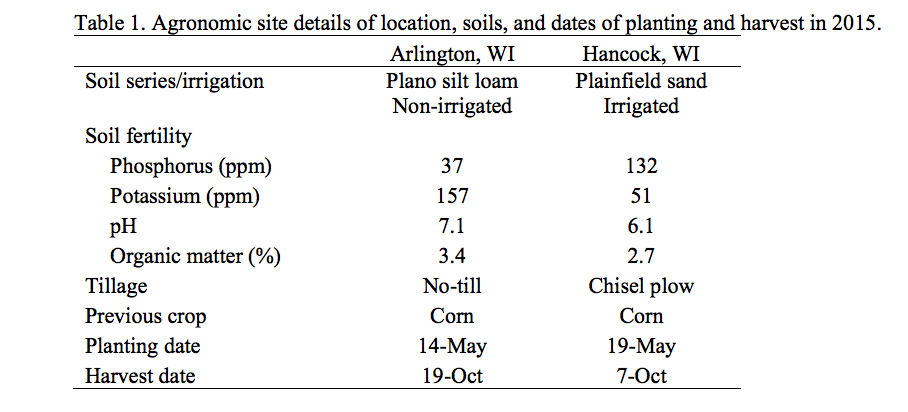By Shawn Conley, State Soybean and Wheat Extension Specialist
To evaluate the effectiveness and compatibility of various in-furrow products for soybean, field research trials were conducted at two locations in Wisconsin in 2015. These trials were conducted in a randomized complete block design with 18 in-furrow soybean treatments and a non-treated control that was replicated four times. The plots were planted in 15-inch rows at 140,000 seeds per acre using soybean variety Asgrow 2035 treated with Acceleron insecticide and fungicide seed treatments. Individual agronomic site data is shown in Table 1.

Products evaluated were selected based on grower, researcher and company recommendations. A custom-built plot planter with seed cone divider was used to plant the plots. All in-furrow treatments were liquid and were planted using a 5-gallon-per-acre carrier rate. Product combinations were mixed in 3-liter plastic bottles and loaded on the planter one at a time. Statistically valid randomization was used and all four reps of each treatment were planted sequentially. A May Wes Rebounder with Y-not Split-it seed firmer/fertilizer tube was used in the furrow to deliver the product to each side of the furrow above the seed.
We did not observe any mixing or compatibility issues with the various products used. Treatment data, significance of F values, and LSD (0.10) for soybean seed, protein, and oil yield, and plant density at two locations are shown in Table 2. Impact of in-furrow treatments varied by location. Significant differences in yield of grain and plant density were found at the Arlington location, and protein and oil at the Hancock location (Table 2). This research was funded by the Wisconsin Soybean Marketing Board.





